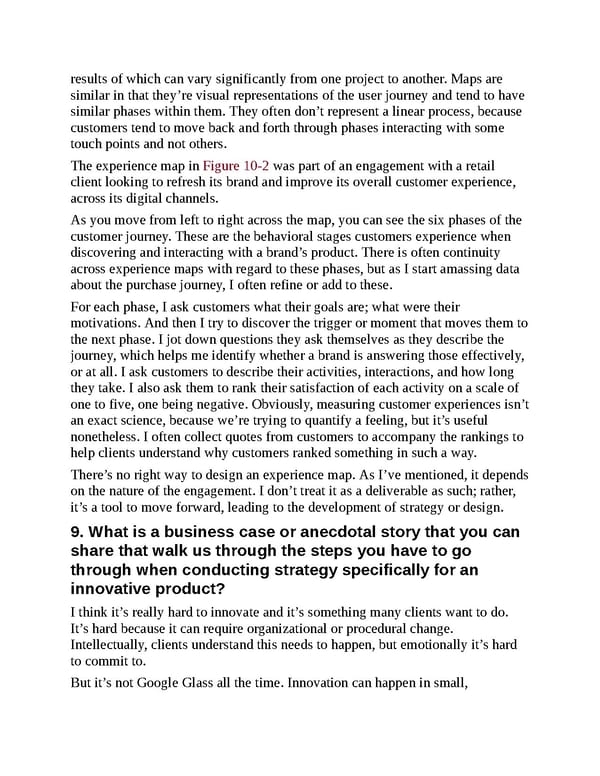results of which can vary significantly from one project to another. Maps are similar in that they’re visual representations of the user journey and tend to have similar phases within them. They often don’t represent a linear process, because customers tend to move back and forth through phases interacting with some touch points and not others. The experience map in Figure 10-2 was part of an engagement with a retail client looking to refresh its brand and improve its overall customer experience, across its digital channels. As you move from left to right across the map, you can see the six phases of the customer journey. These are the behavioral stages customers experience when discovering and interacting with a brand’s product. There is often continuity across experience maps with regard to these phases, but as I start amassing data about the purchase journey, I often refine or add to these. For each phase, I ask customers what their goals are; what were their motivations. And then I try to discover the trigger or moment that moves them to the next phase. I jot down questions they ask themselves as they describe the journey, which helps me identify whether a brand is answering those effectively, or at all. I ask customers to describe their activities, interactions, and how long they take. I also ask them to rank their satisfaction of each activity on a scale of one to five, one being negative. Obviously, measuring customer experiences isn’t an exact science, because we’re trying to quantify a feeling, but it’s useful nonetheless. I often collect quotes from customers to accompany the rankings to help clients understand why customers ranked something in such a way. There’s no right way to design an experience map. As I’ve mentioned, it depends on the nature of the engagement. I don’t treat it as a deliverable as such; rather, it’s a tool to move forward, leading to the development of strategy or design. 9. What is a business case or anecdotal story that you can share that walk us through the steps you have to go through when conducting strategy specifically for an innovative product? I think it’s really hard to innovate and it’s something many clients want to do. It’s hard because it can require organizational or procedural change. Intellectually, clients understand this needs to happen, but emotionally it’s hard to commit to. But it’s not Google Glass all the time. Innovation can happen in small,
 UX Strategy: How to Devise Innovative Digital Products that People Want Page 284 Page 286
UX Strategy: How to Devise Innovative Digital Products that People Want Page 284 Page 286